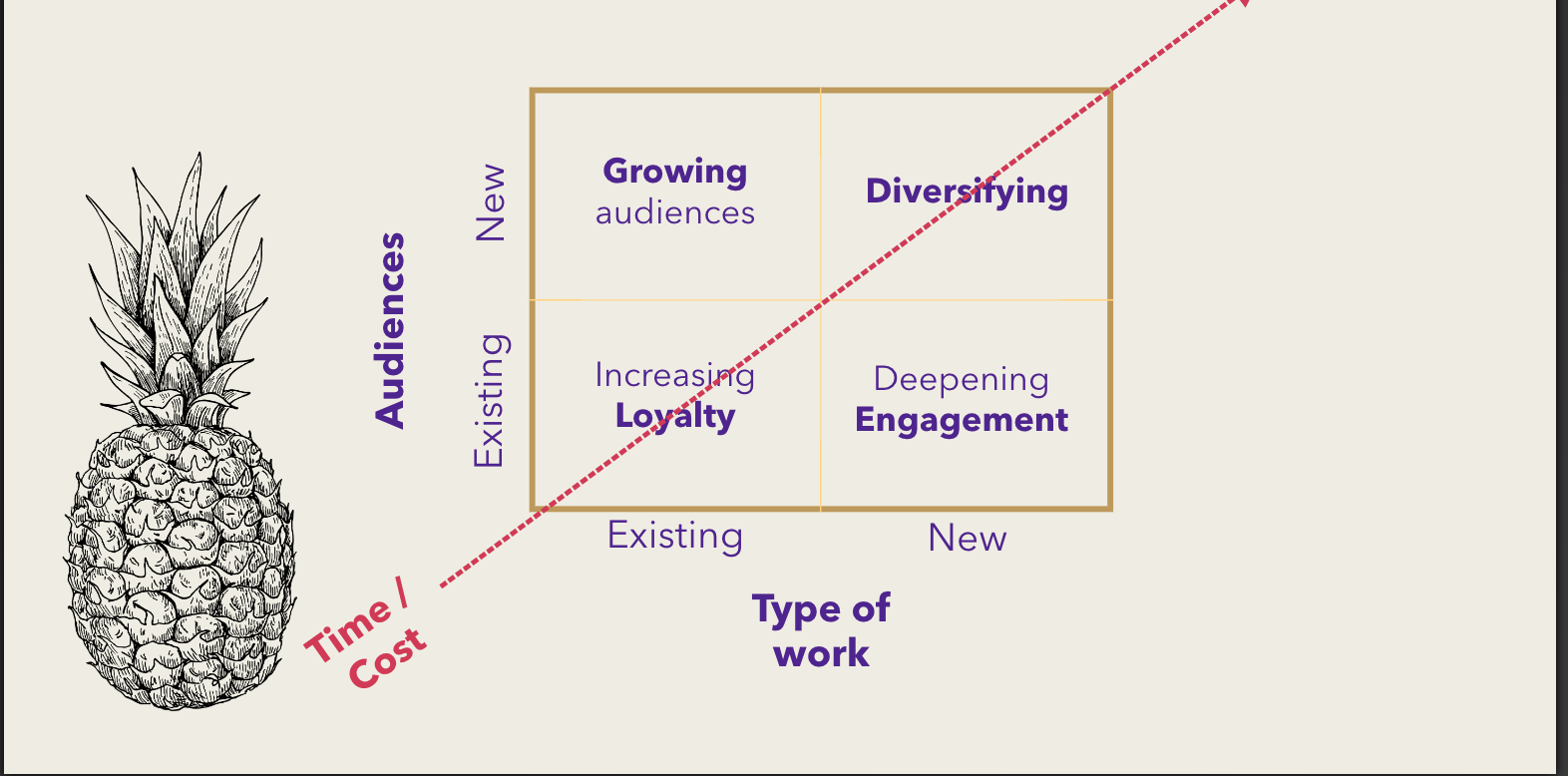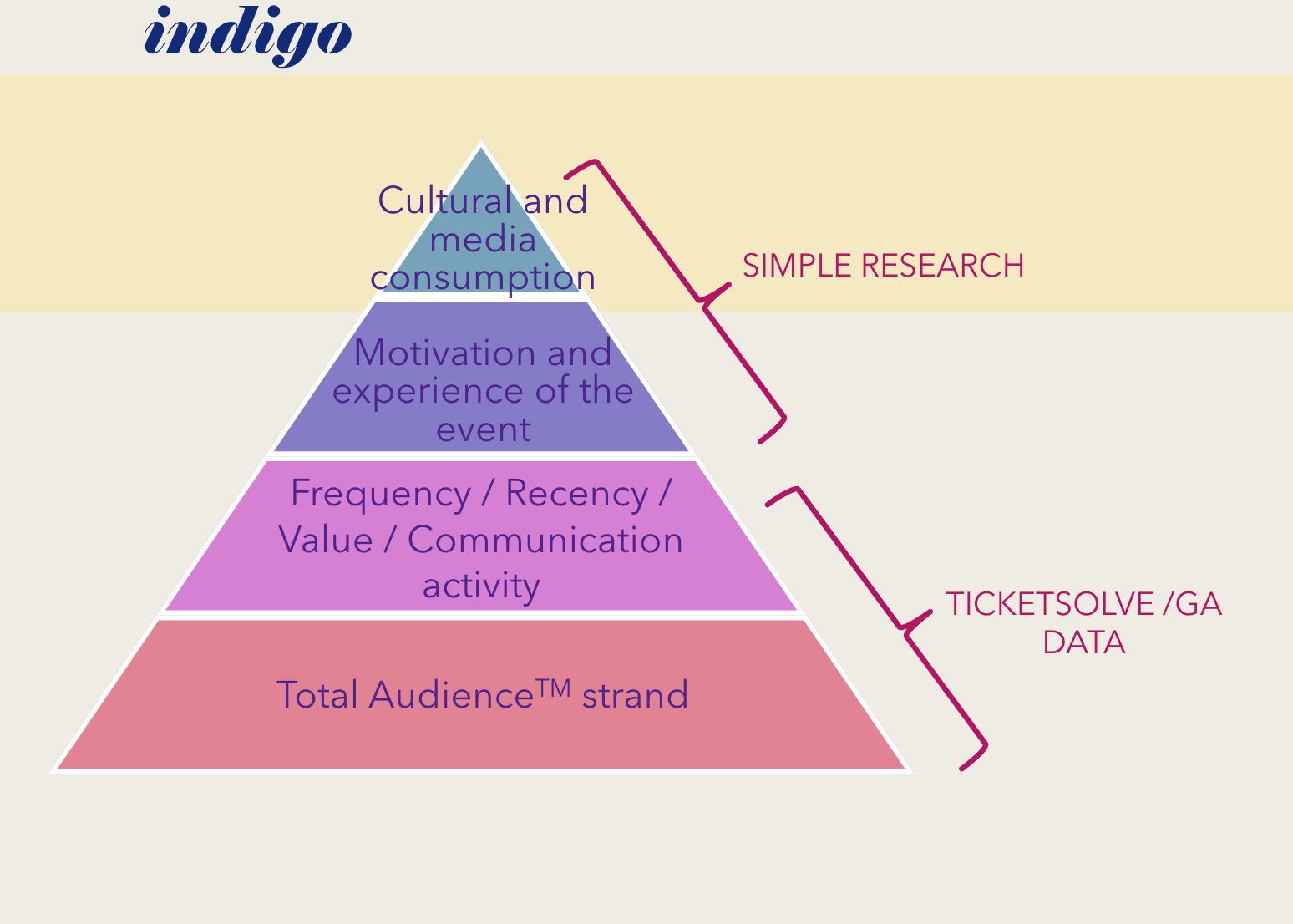The Art of Segmentation: Ticketsolve Forum 2019

We hope this year’s Ticketsolve Forum’s in London and Dublin were inspiring - we thought the content and speakers were really outstanding. We're delighted that so many arts industry professionals could attend, but we know times are busy! So we wanted to give you a taste of one really stand out talk from the London Forum.
Katy Raines is regarded as one of the UK’s leading consultants on CRM and Segmentation for the Arts, and she loves data like us - so it was a no brainer for us to invite her to talk about a subject near and dear to her heart - and ours - segmentation.
Segmentation is not new in marketing or arts marketing. But it is a complex area and is more relevant now than ever. Segmenting allows you to create groups within your audiences that have shared traits. Each segment might have a primary hallmark - something that defines them - that you can then use to create meaningful engagement.

The most common way to segment audiences is often demographic or genre-based.
As Katy explained it is important to split audience segmentation from population segmentation. That is, audience segmentation focuses on the audiences that represent your customers - population segmentation is all others.
Katy took us through how to really look at your audience development priorities. The real insight here is understanding cost (effort plus actual money) and time as it relates to the different types of your audience segments.

In the picture above you can see that the low hanging fruit here is building loyalty with existing customers, but if we look deeper you can another area you can address is deepening engagement with existing customers. Still, in both instances we are focused on existing customers.
Why Segment?
The truth is that not all of your customers are valuable. And there is a cost to going after different types of customers. Add to that the fact that not all customers need the same thing - you can begin to understand why segmenting is really critical.
We need to shift our thinking from sending everyone everything to sending different audiences different things - ultimately that means that you are sending audiences fewer things but more relevant things.
Personalised Marketing is Where it is At!
Another reason to really take a hard look at your segmentation strategy is that personalised marketing is on the rise. The combination of digital marketing and data has led more and more organisations to deliver one-on-one marketing strategies and communications.
The benefit here is that your marketing matches the needs and expectations of customers - ultimately delivering what your customer wants, lowering your costs and driving sales.
Personalised marketing is not new. We've all experienced it from personalised ads in online supermarkets, Amazon showcasing items and offers related to your recent search, or targetted emails. In all likelihood, you are doing some form of personalised targetted marketing already.

Getting More From Segmentation
What we loved about this talk is that it really delved into the depths of segmentation and how to look at your segmentation differently, so you can reduce costs and better target your communications to the relevant audiences, which in turn leads to better sales overall.
As Katy explained, it is important to look at segments and how they relate to your specific venue or arts organisation. So rather than having straight genre-based segments you need to also look at demographic data as well as other data to build a fuller picture of your segments.
So rather than straight genre-based segments:
- Comedy
- Dance
- Drama
- Children’s
Instead, you might have:
- Classical (Classic Drama, Classical Music, Opera, Ballet, Fine Art)
- Contemporary (Dance, New Writing, Physical Theatre,
- Family (Panto, Children's Shows, Workshops)
- Mainstream (Rock and Pop, Comedy, Musicals
Interestingly, as Katy pointed out 80-90% of people stick to their lane! But as you can see you can really target each segment with a strong, clear message.
Katy also shared some interesting research around segmentation and showed us that looking at differences between segments such as leisure pursuits and motivation to attend can all help in developing targetted marketing strategies and tactics.

Katy finished up with helping us all understand that good segmentation should:
- Segment all your audiences
- Simple to understand
- Simple to implement
- Can be measured
- Can be refined as you learn
Whether you are just starting out with segmentation or a segmentation expert, our fantastic Customer Success Team is here to help you get into your data and get better segmenting. Give Aoife or Sarah a shout to get started with the Customer Success Team and get more from your segmentation!
Big thank you to Katy Raines for her great presentation! Find out more about Katy and Indigo Consulting here.
Also a big thank you to Project Arts Centre and Leicester Square Theatre for hosting the Ticketsolve Forums this year!
Categories
Recent posts
Archive
- December 2025 (2)
- November 2025 (1)
- October 2025 (3)
- September 2025 (1)
- August 2025 (3)
- July 2025 (3)
- June 2025 (3)
- May 2025 (4)
- April 2025 (5)
- March 2025 (5)
- February 2025 (4)
- January 2025 (4)
- December 2024 (3)
- November 2024 (5)
- October 2024 (4)
- September 2024 (7)
- August 2024 (5)
- July 2024 (3)
- June 2024 (3)
- May 2024 (3)
- April 2024 (3)
- March 2024 (4)
- February 2024 (5)
- January 2024 (3)
- December 2023 (3)
- November 2023 (4)
- October 2023 (4)
- September 2023 (5)
- August 2023 (3)
- July 2023 (4)
- June 2023 (4)
- May 2023 (5)
- April 2023 (4)
- March 2023 (4)
- February 2023 (5)
- January 2023 (4)
- December 2022 (4)
- November 2022 (3)
- October 2022 (4)
- September 2022 (5)
- August 2022 (2)
- July 2022 (4)
- June 2022 (5)
- May 2022 (4)
- April 2022 (5)
- March 2022 (3)
- February 2022 (4)
- January 2022 (4)
- December 2021 (2)
- November 2021 (3)
- October 2021 (5)
- September 2021 (4)
- August 2021 (4)
- July 2021 (3)
- June 2021 (4)
- May 2021 (2)
- April 2021 (4)
- March 2021 (5)
- February 2021 (4)
- January 2021 (5)
- December 2020 (4)
- November 2020 (4)
- October 2020 (5)
- September 2020 (5)
- August 2020 (4)
- July 2020 (7)
- June 2020 (5)
- May 2020 (5)
- April 2020 (5)
- March 2020 (8)
- February 2020 (4)
- January 2020 (5)
- December 2019 (3)
- November 2019 (5)
- October 2019 (4)
- September 2019 (4)
- August 2019 (5)
- July 2019 (4)
- June 2019 (4)
- May 2019 (5)
- April 2019 (4)
- March 2019 (4)
- February 2019 (3)
- January 2019 (5)
- December 2018 (4)
- November 2018 (8)
- October 2018 (2)
- September 2018 (3)
- August 2018 (5)
- July 2018 (4)
- June 2018 (4)
- May 2018 (1)
- April 2018 (1)
- March 2018 (3)
- February 2018 (2)
- December 2017 (2)
- November 2017 (3)
- October 2017 (4)
- September 2017 (2)
- August 2017 (1)
- July 2017 (5)
- June 2017 (3)
- May 2017 (2)
- April 2017 (3)
- March 2017 (2)
- February 2017 (3)
- January 2017 (3)
- December 2016 (4)
- November 2016 (1)
- September 2016 (1)
- July 2016 (3)
- June 2016 (1)
- May 2016 (2)
- April 2016 (2)
- February 2016 (1)
- January 2016 (3)
- December 2015 (2)
- September 2015 (1)
- August 2015 (2)
- July 2015 (1)
- June 2015 (2)
- May 2015 (2)
- April 2015 (5)
- March 2015 (2)
- February 2015 (2)
- January 2015 (4)
- December 2014 (3)
- November 2014 (3)
- October 2014 (2)
- September 2014 (3)
- August 2014 (3)
- July 2014 (3)
- June 2014 (7)
- May 2014 (6)
- April 2014 (3)
- March 2014 (2)
- February 2014 (1)
- January 2014 (3)
- December 2013 (1)
- August 2013 (1)
- June 2013 (1)
- April 2013 (1)
Sign up for regular updates



